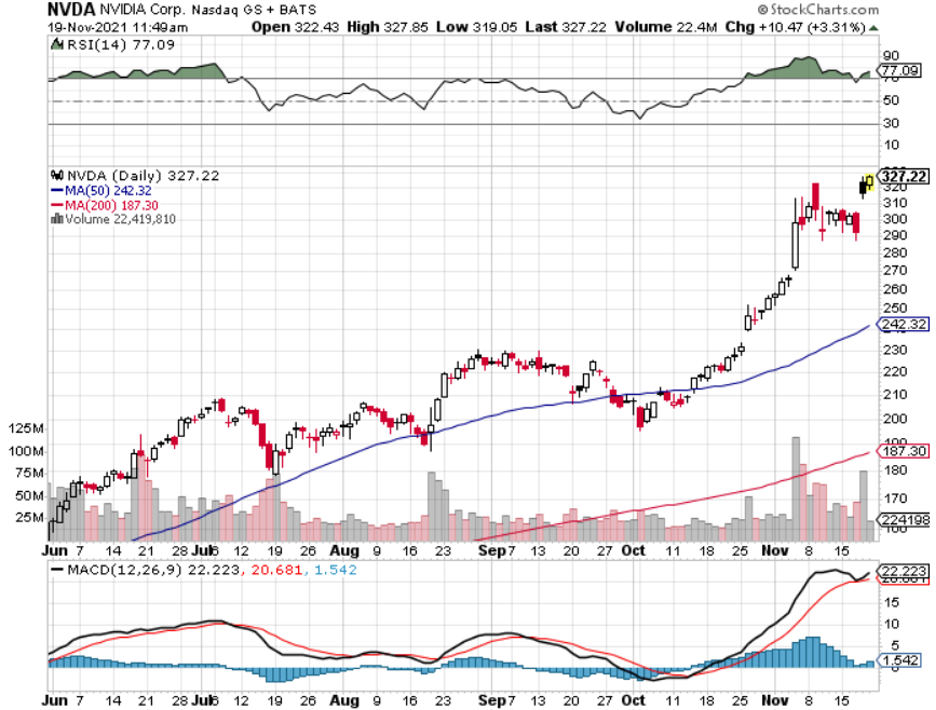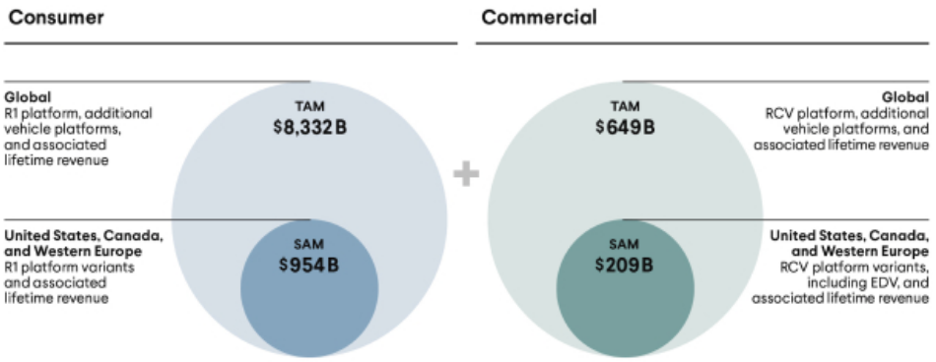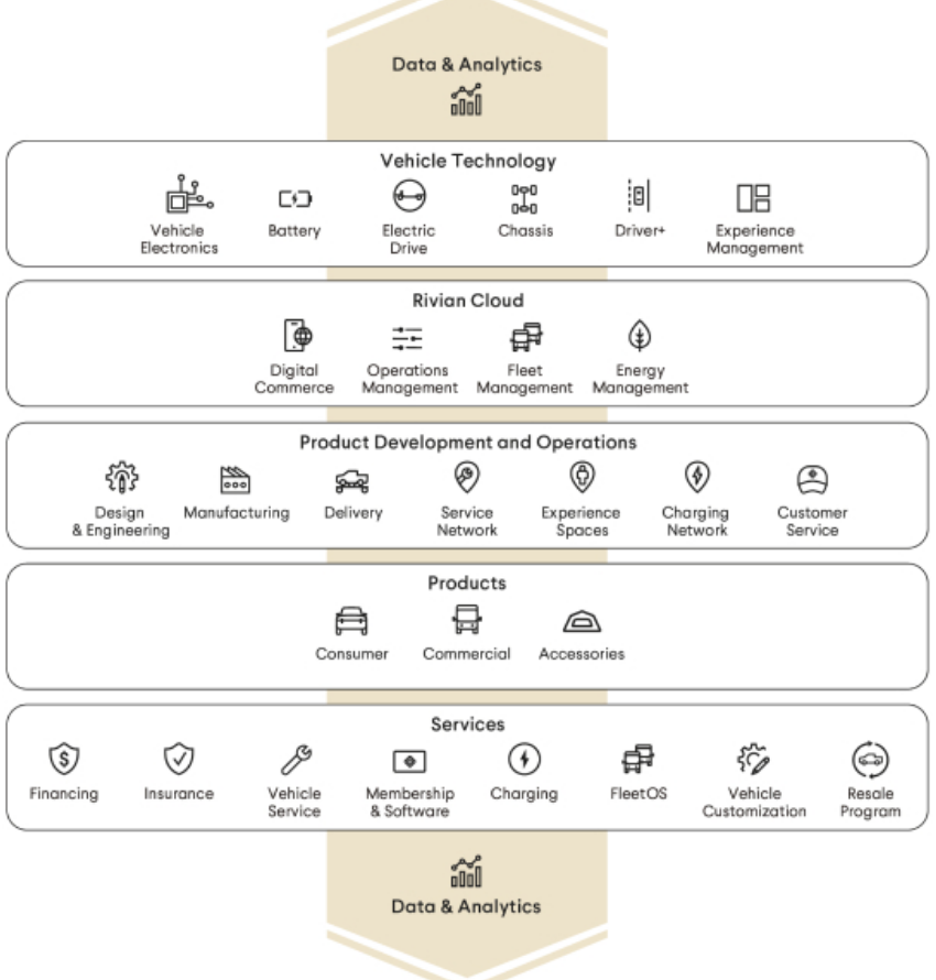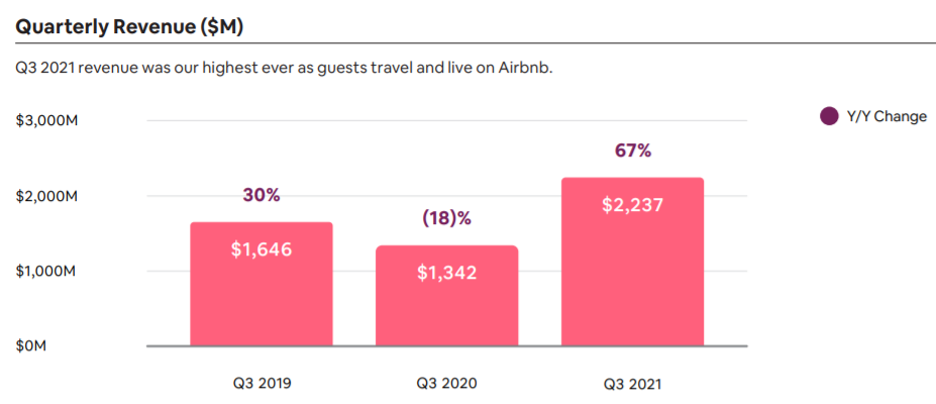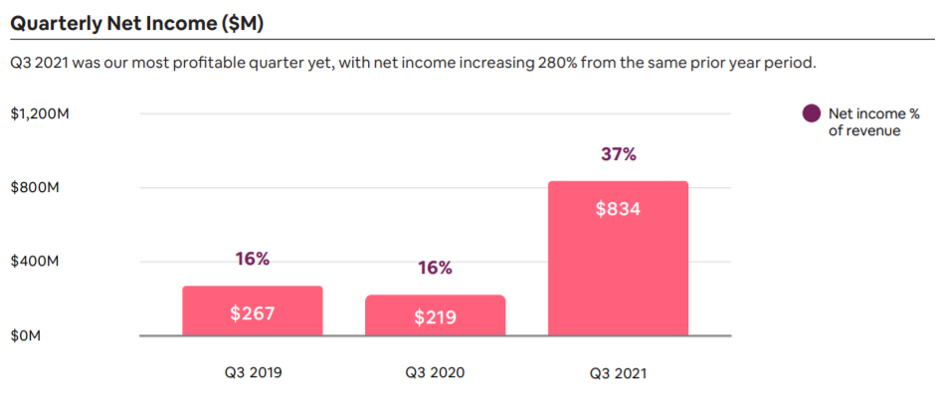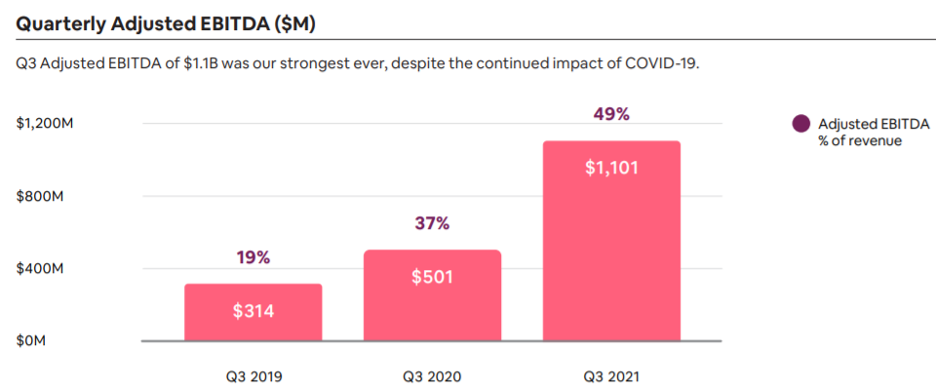“By giving people the power to share, we're making the world more transparent.” – Said Mark Zuckerberg
Mad Hedge Technology Letter
November 19, 2021
Fiat Lux
Featured Trade:
(THE TECH FIRM RESPONSIBLE FOR THE METAVERSE AVATAR)
(NVDA)
Nvidia (NVDA) is one of those tech companies you elevate to the top pantheon of tech companies and readers can’t take a glimpse into the future just by getting to know the chip company better.
Bluntly speaking, it’s a can’t miss tech company that every reader should have as part of their portfolio.
How are they part of the avant-garde of tech?
They are flagbearers of accelerated computing and will contribute part of the groundwork upon which the metaverse and its future business opportunities will be constructed upon.
Sounds sexy, right?
Nvidia deals in chips — chips are enablers, but chips don't create markets, software creates market.
At this point, accelerated computing is very different than general-purpose computing, it’s just at another level with the amount of data these need to be processed and the functionality of it.
Artificial intelligence, robotics, and most of the cutting-edge applications in the world need support from accelerated computing because GPUs run out of steam and that people are saying that not because it's not true, it is abundantly clear that the amount of instruction in parallel that you can squeeze out of a system is although not zero, is incredibly hard.
Accelerated computing delivers great benefits and does not require a lot of work and yet the work basically says for every domain, for every application — to have a whole stack.
What is a stack?
A stack is a linear data structure that follows a particular order in which the operations are performed.
And so whenever you want to open a new market by accelerating those applications or that domain of applications, you have to come up with a new stack, and the new stack is hard because you have to understand the application, you have to understand the algorithms, the mathematics, you have to understand computer science to distribute it across, to take something that was single-threaded and make it multi-threaded and make something that computer specialists have done sequentially and make it process in parallel.
You break everything, you break storage, you break networking, you break everything.
And so it takes a fair amount of expertise and that's why over the course of 30 years Nvidia has become a full-stack company because they solve complex problems consistently practically through decades basically integrating and connecting all that needs to be connected in a fluid type of way.
The ultimate benefit, once you have the ability, then you can open new markets and Nvidia has played a really large role in democratizing artificial intelligence and making it possible for anybody to be able to do it.
Democratized scientific computing is one of Nvidia’s biggest achievements so that researchers and scientists, computer scientists, data scientists, scientists of all kinds can get access to this incredibly powerful tool that we call computers to do advanced research.
This brilliant, advanced computing is thrusting Nvidia to the forefront of the metaverse where they have been working on perfecting the technology to populate a high-quality 3D avatar.
They call this business division the Omniverse and it took half a decade to start building Omniverse, but its largely built on a quarter century of work.
Nvidia is developing an AI to be able to speak in a human way so that people feel more comfortable and more engaged with the AI.
They are being built in pieces and will be integrated to create what is called Omniverse Avatar.
How quickly will they deploy this?
I believe Omniverse Avatar will be in drive-throughs and restaurants, fast food restaurants, check out with restaurants, in retail stores, all over the world within less than five years.
And we're going to need it in all kinds of different applications because there is such a great shortage of labor and there is such a wonderful way that you can now engage with a 3D Avatar.
This 3D avatar doesn't get tired and it's always on and it will certainly be cloud-native.
This revenue and growth essentially are generated by accelerated computing and is a full-stack challenge.
So I am not focusing on the 50% quarterly revenue growth or the 83% in quarterly EPS growth, because that will all fall into place naturally if they keep their lead in accelerated computing refining their full-stack capabilities.
It takes software to open new markets. Chips can't open new markets. If you build another chip, you can steal somebody's share, but you can't open a new market and it takes software to open new markets.
Lastly, the Omniverse opportunity is a great opportunity for Nvidia who could be responsible for creating the avatars in the metaverse.
They are ostensibly one of the foundational companies of the Metaverse.
Nvidia are one of our favorite tech companies at the Mad Hedge Technology Letter.
Mad Hedge Technology Letter
November 17, 2021
Fiat Lux
Featured Trade:
(THE TESLA OF PICK-UP TRUCKS)
(RIVN), (AMZN), (TSLA)
Rivian Automotive Inc. (RIVN), the California-based EV company, touched $153 billion in market valuation making Rivian the largest U.S. company with zero revenue.
Exuberance can take you this far, but the company will need to show investors sales after the pixie dust wears off.
I understand that part of the narrative is that this could be the next Tesla (TSLA), and back of the napkin math shows us if it is a certain percentage of Tesla going forward then it would be certain billions of dollars.
The $150 billion valuation is too fast too soon, but when traders grab a hold of this rocket, all they need to do is add a little fuel.
It does speak loudly to investors that there is excess liquidity ebbing and flowing in the financial system where a stock can go this high just based on potential.
Let’s see the damn car first!
Granted, the car looks fantastic based on internet reviews, and if they do become the Tesla of pickup trucks, then anything that means reversion in the stock will be muted.
Word on the street is that only employees are driving the truck around now and the greater public should start receiving their Rivian orders at the end of 2021 or 2022.
EV peer Lucid Group Inc. also rallied intensely closing up 24% and eclipsing the valuation of Ford in the process. Lucid is now a $91 billion company, compared to Ford’s $79 billion.
Rivian will also need to compete with the upcoming European EV behemoths with Volkswagen that is Europe’s largest automaker with about 10 million vehicle deliveries per year, making it the global number two behind Toyota Motor Corp.
Rivian’s trucks are called the R1T and an electric SUV — R1S.
They forecast annual production will hit 150,000 vehicles at its main facility by late 2023.
At one point, Rivian was worth more than almost 90% of S&P 500 companies, including stocks like Goldman Sachs Group Inc., Boeing Co., Citigroup Inc., Starbucks Corp.
Rivian also benefited from Tesla’s Founder Elon Musk selling big tranches of stock which gave EV investors the green light to pile into Rivian even if it’s not for the long term.
Pricing for Rivian’s models starts around $70,000, and each features a base driving range of more than 300 miles on a full charge.
The hope is that mass affluent truck shoppers won’t be able to get enough of Rivian. Remember, the Ford F-150 is the best-selling vehicle in the country. In fact, the top six automobiles in the U.S. by sales are either pickup trucks or SUVs.
Amazon’s 20% stake in the company is the stamp of approval for many investors on the fence and they have already ordered 100,000 units for delivery by the end of 2030.
I could easily see Amazon ramping up orders quickly if they like the quality of the first two models.
Whether the stock should be $150 billion with 0 sales or not, is not really the full story of Rivian.
With only a narrow snapshot of what’s really going on, the high valuation is more a story of the momentum of the market in November that has seen big tech rejuvenate.
Rivian merely just got caught up in the updraft.
I am not diminishing the company, but they will need to demonstrate consistent earnings to build those long-term holders of the stock and I do believe they can do it.
The specs of the car look and feel like a Tesla and if they can replicate 80% of the quality with their first iterations, socially, they could catch on fire and become the new hip car to the masses.
This does set the stage for a critical first earnings report where the first sales will be thoroughly dissected with a fine-tooth comb and possible offer an entry point to investors after people realize this isn’t a $150 billion company yet.
Remember that it took Tesla years to stabilize their volatile stock, and Rivian might have to go through the same right of passage to be legit.
Rivian has the potential to become the #2 behind Tesla and that’s worth $90 billion right there, it’ll be interesting to see what pans out after that.
As for buying the stock, wait for a big sell-off then slowly scale in.
“Invention is by its very nature disruptive. If you want to be understood at all times, then don’t do anything new.” – Said Founder and CEO of Amazon Jeff Bezos
Mad Hedge Technology Letter
November 15, 2021
Fiat Lux
Featured Trade:
(THE GEM OF TRAVEL TECH ACCELERATES)
(ABNB)
Airlines are bracing for a tsunami of travelers for the upcoming Christmas season and it’s no surprise — people are itching to get out of their homes for good reason.
What the news reports don’t tell you is that many of these travelers are on their way to an Airbnb (ABNB), where they will not only stay a weekend to sample the local zeitgeist, but will make their Airbnb a work-from-home office for 4 weeks or perhaps more.
The side effects from the pandemic have indicated to companies that technologies like Zoom and DocuSign make it possible to work from home.
Airbnb makes it possible to work from any home.
And this newfound flexibility is triggering a revolution in how we travel because for the first time ever, millions of people can now travel anytime, anywhere for any length, and even live anywhere on Airbnb.
I firmly believe that this trend toward more flexibility will only accelerate.
The pandemic has suddenly untethered tens of millions of people from the need to go into an office.
In recent months, some of the world's largest companies —Procter & Gamble, Amazon, Ford, PricewaterhouseCoopers — have announced increased flexibility for employees to work remotely.
This is just the beginning as I fully expect more companies to follow their lead.
I am witnessing several trends as a result of this travel revolution.
Can you believe now that Mondays and Tuesdays are currently Airbnb’s highest growing days of the week to travel?
This is a paradigm shift in the way we think about movement and cross-border living.
Second, now people are traveling everywhere, literally everywhere. During the pandemic, over 100,000 cities have had at least one booking on Airbnb. And that includes 6,000 towns and cities that received their first booking ever on Airbnb. The third trend is people aren't just traveling on Airbnb, they're now living full time on Airbnb.
Long-term stays on Airbnb, classified as a stay up to 28 days or more, remain Airbnb’s fastest-growing category by trip length.
People are traveling with Airbnb for extended vacations, relocation, temporary housing, student housing, and many other reasons.
I’ve illustrated how there has been a massive boost in inherent demand for Airbnb units with the merging of travel and work, but the thing that gets me excited is the supply side of the equation.
Now finally, more people than ever are interested in hosting.
Airbnb ended Q3 with the most active listings ever.
Demand is driving more supply. In fact, Airbnb’s highest supply growth is in their highest-demand destinations, particularly in North America and Europe.
The travel rebound that began earlier this year accelerated in the third quarter resulting in Airbnb's best quarter yet recording revenue of $2.2 billion surpassing 2019 by 36%.
Net income of $834 million was the highest ever, nearly four times larger than a year ago.
Gross booking value of $11.9 billion slingshots above 2019's levels by 23%
Airbnb now has 4 million hosts, and 90% of hosts are individual meaning they specifically latched onto Airbnb’s platform to become a first-time host.
These units are only listed on Airbnb translating into Airbnb possessing the best quality of rental units and in high volume.
No other platform can lay claim to the depth of Airbnb’s business and companies like Tripadvisor.com, Expedia.com are miles behind the curve and still over-reliant on Google’s search engine to manufacture leads that translate into costly customer acquisition fees.
Airbnb now has a simple 10-step process to become a host where they’ve radically reduced the number of steps.
They’ve made it easier to host and the conversion rate for people starting to lease their space flow is up.
On no night, are Airbnb supply-constrained globally.
Before the pandemic, most people were narrowly stuck in their search parameters.
However, now, over 500 million searches have used flexible searches. More than 40% of searches, guests are flexible on where or when they're traveling, and as Airbnb management has become brilliant at predicting the onslaught of demand before it comes to fruition, they have also been stellar at adding the corresponding supply at the right moment in a preemptive fashion.
Airbnb has really moved the profitability needle and future quarters will see a hockey stick-shaped effect on revenue and EPS.
Any pullback should be bought and, to be honest, Airbnb really has hit the sweet spot as the world’s digital housing agent.
I am highly bullish on Airbnb for the year 2022 and beyond.
“There are two kinds of forecasters: those who don’t know, and those who don’t know they don’t know.” – Said Harvard economist John Kenneth Galbraith
Mad Hedge Technology Letter
November 12, 2021
Fiat Lux
Featured Trade:
(PEAK STREAMING GROWTH ISN’T THE END OF STREAMING)
(DIS), (NFLX), (AMZN)
Legal Disclaimer
There is a very high degree of risk involved in trading. Past results are not indicative of future returns. MadHedgeFundTrader.com and all individuals affiliated with this site assume no responsibilities for your trading and investment results. The indicators, strategies, columns, articles and all other features are for educational purposes only and should not be construed as investment advice. Information for futures trading observations are obtained from sources believed to be reliable, but we do not warrant its completeness or accuracy, or warrant any results from the use of the information. Your use of the trading observations is entirely at your own risk and it is your sole responsibility to evaluate the accuracy, completeness and usefulness of the information. You must assess the risk of any trade with your broker and make your own independent decisions regarding any securities mentioned herein. Affiliates of MadHedgeFundTrader.com may have a position or effect transactions in the securities described herein (or options thereon) and/or otherwise employ trading strategies that may be consistent or inconsistent with the provided strategies.




